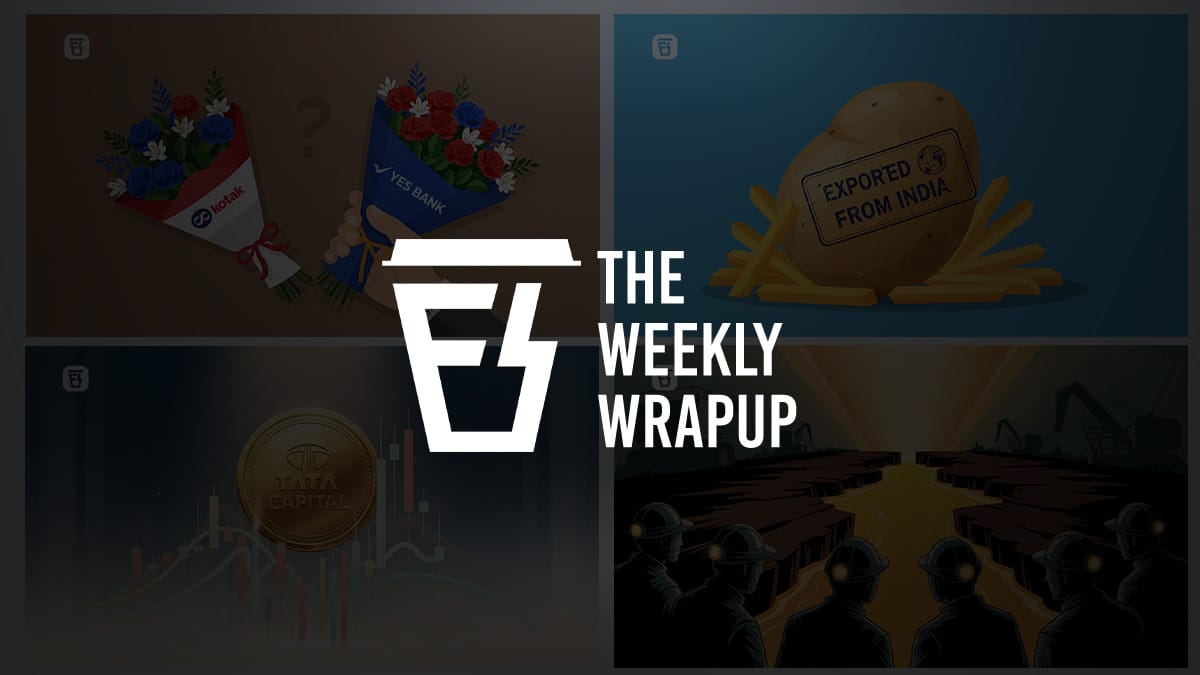The Tata Capital IPO, India’s gold rush, and more….

In this week’s wrapup, we talk about private gold mining in India, how India became a French fry powerhouse, and why SMBC chose Yes Bank over Kotak Mahindra Bank to become its biggest shareholder. We also took a short Dussehra break, which is why you’re seeing fewer stories than usual.
Also, in this week’s Markets edition, we break down the Tata Capital IPO that opens for subscription on October 6th and closes on October 8th. Click here to read the full story.
With that out of the way, let’s look back at what we wrote this week.
The gold rush begins at home
India’s love for gold is a story that never ends. And to keep that love alive, we import about 1,000 tonnes of gold each year, but mine only about 1.5 tonnes from our own soil. Which honestly makes you wonder — if demand is so huge, why don’t we mine more at home?
There are legacy mines that go back to pre-Independence, like KGF and Hutti. When KGF closed in 2001, it mined about 800 tonnes of gold. It eventually shut down because mining became too expensive. Even with the few mines operating today, production still falls short of demand, partly due to policies that remained in place until the 2023 Mines and Minerals Act.
But for the first time, private gold exploration and mining in India has become a reality — the first proof of concept being the Jonnagiri gold project in Andhra Pradesh. Its first year might see an output of 750 kg, a modest number compared to imports, but enough to set an example. So, what does this mean for other critical minerals lying beneath our ground?
Find out in our Monday story here.
How India quietly became a French fry powerhouse
Did you know that the potato is India’s most eaten vegetable? We produce nearly 60 million tonnes every year, making us the second-largest potato grower in the world.
But until a few years ago, if you ordered French fries at McDonald’s, chances are those frozen spuds came from Europe.
That story has changed lanes now with India exporting frozen potato products worth nearly ₹1,817 crores in FY25. That’s almost nine times what we did five years ago, with Gujarat at the heart of this transformation, producing around 80% of the country’s processed potatoes.
So, how did a humble potato conquer the world’s French fry orders?
Check out our Tuesday story here for the full ‘batata’ revolution.
Why did SMBC choose Yes Bank over Kotak Mahindra Bank
SMBC (Sumitomo Mitsubishi Banking Corporation) held a slice in one of India’s leading banks: Kotak Mahindra. And on paper, that investment had almost everything: A CASA (Current Account and Savings Account) of 40%, an ROE (Return on Equity) of 12% and the stability that came from vesting in a large player.
But one thing that it lacked was boardroom representation. Call it prestige without power, and that might be one of the reasons why SMBC walked away and picked Yes Bank.
But why Yes Bank?
After all, they almost collapsed back in 2020, had a tall stack of bad loans and sudden exits in its management.
Get the full scoop here and find out if SMBC’s bet on Yes Bank can turn fruitful in the long run.
Liked this wrapup?
Don’t forget to share it on WhatsApp, LinkedIn, and X.
A message to all the breadwinners
You work hard; you provide and make sacrifices so your family can live comfortably. But imagine when you're not around. Would your family be okay financially? That’s the peace of mind term insurance brings. If you want to learn more, book a FREE consultation with a Ditto advisor today.
